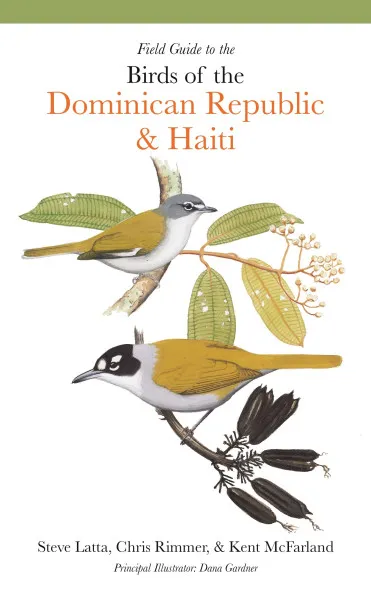
The island of Hispaniola, comprised of the Dominican Republic and Haiti, is among the Caribbean’s most exciting birding destinations. With an excess of 300 species recorded, the island is home to an impressive 30+ endemics (more than any other Caribbean island) with all but one of those, Grey-crowned Palm-tanager, found in the accessible Dominican Republic. One of the most celebrated endemic birds of the region is the Palmchat, which is the sole representative of its genus and is the national bird of the Dominican Republic.
This new slimmed-down update of the first edition, published back in 2007, is eminently more portable and it has also been revised and updated to reflect recent taxonomic changes. The authors have also opted to split two species yet to be formally acknowledged (Hispaniolan Kingbird and Hispaniolan Eleania) and use the less familiar, though to my mind more appropriate and evocative, Hispaniolan Highland-Tanager and Green-tailed Ground-Tanager for White-winged Warbler and Green-tailed Warbler, respectively.
This book follows the standard layout of similar contemporary field guides, with colour plates facing the species text. Overall the illustrations by Dana Gardner are good, and more than adequate for identifying most birds in the field, while the concise text provides information on status, distribution, habits, vocalisation and identification.
The introductory chapters are excellent, giving the reader and prospective visitor a sense of what to expect when birding on the island, plus highlights the value of eco-tourism to this relatively under-visited tropical gem. The authors also hope that the book will continue to inspire island residents to appreciate local bird life and work towards helping conserve the countries’ natural treasures. Reading this guide made me long to return to the Caribbean, and indeed to Hispaniola which I last visited in 2000, to soak up its many avian and cultural delights.
Reviewed by
- Author: Steven Latta, , Chris Rimmer , Kent McFarland & Dana Gardner (principal illustrator)
- Publisher: Princeton University Press, Princeton
- Publication year: 2022
- ISBN: 9780691232393
- Format: Paperback
- Page count: 228
- RRP: £19.99
- Available from: NHBS
